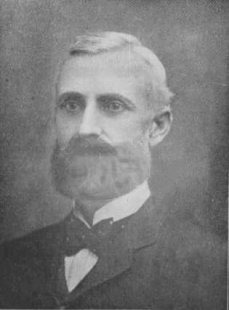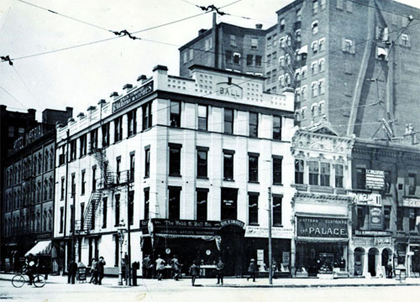The History Of The Ball Watch Company
To a large extent, the development of the watch industry, in America, can be attributed to the advent and later development of American railroads. Through tragedy, the need for uniformed time within the railroad system helped push the American watch industry to success.
Such an event occurred, following an April, 18th, 1891 tragic event, when two trains headed in the opposite direction collided head-on. The news made headlines across the country! The horrific crash happened when a fast mail train (consisting of three mail cars and two parlor cars) heading east and a passenger train (five coaches and two baggage cars) going west collided head-on near Kipton, Ohio. The passenger train was supposed to let the mail train go by, but the conductor had not realized that his watch had stopped for four minutes and then restarted and missed his opportunity. It was determined the passenger train was late getting to the stopping point – a lack of discipline and abuse of the regulations and standardized system, in place, was all prevalent. The massive collision killed nine men including the engineers of both trains, several onlookers were injured as well.

Webster Clay Ball, a Cleveland, Ohio, jeweler and watchmaker, was appointed by the General Superintendent (in charge of the rail line) to investigate time keeping issues on the line, if any. Ball was designated Chief Time Inspector which resulted in strict guidelines, he established, for the manufacturing of sturdy and reliable precision timepieces. These standards included mandatory record keeping of the reliability of each railroad employee’s watch on regular inspection. This inspection, when passed, certified the watch as having RR (Railroad) Standard.
To obtain the RR Standard certification, the watch required:
- A size 18 or 16 (44.86mm or 43.18mm) with no lid on the dial
- A plain white dial, bold black hands and Arabic numbers
- A winding stem at 12 o’clock
- A minimum of 17 jewels
- The watch must have a double roller
- The watch must be lever-set
- The watch must be adjusted to at least 5 positions
- The watch must be adjusted to temperatures of 40 to 95 °F (4 to 35 °C)
- The watch’s accuracy must not gain or lose a maximum of 30 seconds a week
This system of standards helped establish accuracy and uniformity in timekeeping. Railroad watches now became uniform, whenever accuracy in time was required. For the first time, if a railroad worker gave you the time, it was correct. Officially, the result was the establishment of watch performance and inspection standards, in 1893.
How did Ball gain so much trust and respect?
Born in 1847, he grew up on a farm in Knox County, Ohio, the oldest of 8 other siblings. After graduating, at age 22, he started his journey in Fredericktown, Ohio, as a jeweler/watchmaker apprentice with a modest earning of up to $1 per week. At 27, he took his knowledge and leveraged it by working as an outside sales representative for the Dueber Watch Case Manufacturing Company, of Cincinnati, Ohio – a manufacturer of cases for finer watches. This allowed Ball to learn advertising and selling, while travelling the country – valuable experience for any future entrepreneur. By 1879, the 32 year old Ball, now ready to settle down, purchased a share in Whitcomb & Metten Jewelers in Cleveland, Ohio. Within 2 years he purchased Metten’s interest in the store and renamed it Whitcomb & Ball Jewelry Store. Moving quickly, he purchased the remaining interest from Whitcomb and with that recognized him as not only an outstanding jeweler but, more so, as a time expert. As a marketing ploy, Ball set up a pocket watch chronometer (a portable timekeeping device of great accuracy) for display in the store’s window. Passerby’s would use the chronometer to sync their pocket watch and remain on ‘Ball’s time’.
The jewelry store provided railway workers with reliable pocket watches and timing instruments. By the time of the incident, six railroads were served by Ball including Cleveland Cincinnati Chicago and St. Louis Railroad Company, New York Pacific & Ohio Company, C.A. & C. Railroad Company, Valley Railroad Company, Pennsylvania Company and New York Central & St. Louis Railroad Company. This earned Ball the honor of Chief Time Inspector, following the crash.
After four months of investigation, Ball reported that timekeeping was not standardized with more than seventy ‘official’ times, depending on the railroad. He required a more stringent hiring and training of inspectors, to inspect and equip more than 2,000 watches for accuracy. No employee was permitted to go on duty until they carried a watch that fulfilled proper standard. After approved, the watch had to be re-submitted routinely every two weeks for synchronization and was required to go through a complete overhaul and inspection, every two years. If the watch needed to be repaired, another synchronized watch would be loaned. The new inspection system was the beginning of a vast ‘Ball’ network that eventually encompassed 75% of the nation’s railroads, covering over 125,000 miles (201,168 kilometers) of railroad extending into Canada and Mexico, as well.
The Webb C. Ball Watch Company was officially incorporated in 1891, in Cleveland, Ohio. From its beginning, the company laid the foundation to a brand worthy of its excellence with the words precision, accuracy, and reliability at the forefront of its brand’s mission. To substantiate this, enforcing the standards of accuracy through his RR Standard and Watch Inspection Service, Ball developed several specifications for accuracy, including different patented calibers. These accomplishments would pave the way for gaining contracts of the remaining eight Vanderbilt railroads east of Chicago, by 1902. The Ball Watch Company had now achieved outstanding status in the railroad timekeeping programs.
While the Ball Watch Company was the best the world had known at regulating standards, they were not manufacturing their own in-house movements. They branded and sold timepieces manufactured by eight different American manufacturers – including Hampden, Elgin, Hamilton and Waltham – nestling in watch cases by Wadsworth, Dueber and Keystone – while they were not produced in-house, all were designed according to Ball’s requirements. Yes, once Ball received these fully built watches, they put them through another round of stringent inspection under their inspectors, once again. By 1908, Ball was inspecting approximately 180 railroads and regulating more than 1 million railroad watches.

From this came many fruitful years, which the company enjoyed, becoming the country’s largest wholesale distributor of standard railroad watches. However, during World War II, the US watch industry was halted and ordered, by the government, to stop all watch production and Ball immediately moved into the defense industry, manufacturing military watches, chronometers, fuses for artillery shells, altimeters and other aircraft instruments and sapphire bearings used for aiming cannons. In March, 1944, the American watch companies petitioned the government for relief from the avalanche of Swiss imports. Switzerland, officially neutral during World War II and have not taken part in a war since 1505, the longest standing neutral nation in the world, was not ordered to halt production and continued, as normal. During the U.S. halt, the Swiss captured, a whopping, 95% control of the U.S. watch market and had a complete monopoly of the machinery needed to make watches. After the war, being heavily affected, combined with the American railroads decline – Ball went with it. Ball’s Cleveland jewelry store ceased operation in 1962.
Ball’s family continued to run the Ball Watch Company for decades after his death, on March 6th, 1922, until the 1990s when the right to use the name was sold to private investors who came together to establish it as a Swiss company, a fresh restart – moving the brand to La Chaux-de-Fonds, within the Watch Valley Of Switzerland. The new firm moved forward featuring Swiss-made ETA movements and dials, hands and markers that remained true to Ball’s original design guidelines. Today, the Ball Watch Company is a Swiss luxury watch company owned by Asia Commercial Holdings, Ltd – a Hong Kong real estate company.
The refreshed brand proudly boasts: micro gas tubes – every Ball model shines instantly 100 times brighter than markers using luminous paint; 904L grade stainless steel; an anti-shock and anti-magnetic system; a spiral bimetallic thermometer; expanded operating temperature range; automatic helium release valve; GMT and world time functions; a slide chronograph system and patented triple folding buckle. Their collections today are named as a nod to their past – Official Railroad, Engineer, Trainmaster, Fireman and Roadmaster.
Watch enthusiasts and enthusiasts alike know, and with good reason, the Ball Watch Company story is significant in American horology history.

